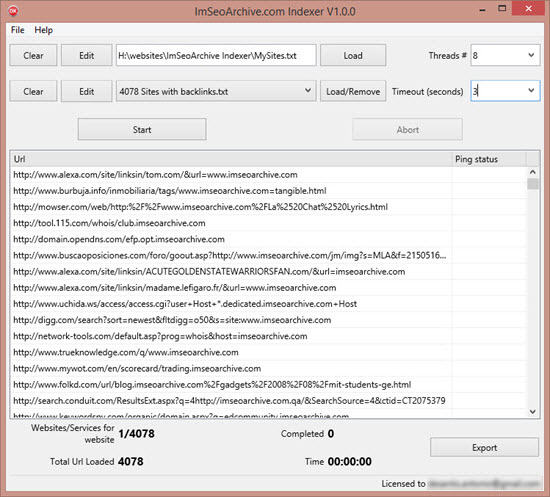

Given the number of streaming media providers out there, you’d think that there would be a big market for this kind of software. Thankfully, this is the sort of thing that computers are good at-boring, repetitive tasks involving a little math. To figure this out, you need to divide the number of bytes delivered by the encoding bit rate, which may or may not be recorded in another log entry field.Īdditionally, what you’ll want to do is export this information to a spreadsheet format so you can compare it to other metrics you may have, as well as create graphs and charts so you can track trends over time. But on a file-by-file basis, it’s more useful to know what percentage of the file people watched. This is useful as an aggregate number to know exactly how much bandwidth you’re using. For example, all log files record how much data was sent. Each log entry must be tallied, and some of the data may need to be manipulated to be useful. The challenge is to extract this information and present it in a useful format. Depending on what streaming format you’re using, you’ll have lots of other data that can be mined for more information. A typical log file entry contains the date and time of the request, the IP address of the viewer, the name of the file requested, and how much of the file was sent. Each entry is a single line of text, containing multiple fields, each of which contains information about the transaction.

Every time a request is processed by your streaming server, an entry is written in the log file. To understand this, you have to extract as much information as possible out of your log files.Įxtracting information out of your log files isn’t rocket science. In fact, your existence is probably intimately tied to how well your system is working. No matter how large or small your streaming media infrastructure is, it’s critical to know how it’s performing. ///diagnostics/json.php?v=1.0&pageinfo_url=/multimedia/-206901-1.Analyzing Streaming Media Server Log Files.///subscribe/lead_webinar.html?product_id=44742&zkConsole=1.Referrer (NOTE: these always start with http and a :, but I haven't posted on the Answers site yet enough for it to allow me to put URLs in my posts.)
#AWSTATS EXPORT CODE#

File(/export/sites/client_05/htdocs/multimedia/-206901-1.html/index.html) is not within the allowed path(s): (/app/ips/diagnostics:/app/awstats:/export/sites) in /app/ips/diagnostics/json.php at line 153 file_exists(): open_basedir restriction in effect.File(/export/sites/client_05/htdocs/news/-218927-1.html/index.html) is not within the allowed path(s): (/app/ips/diagnostics:/app/awstats:/export/sites) in /app/ips/diagnostics/json.php at line 153 () /export/sites/client_04/htdocs/subscribe/lead_webinar.html:0 smarty_function_zk_validate_field() /export/sites/client_04/data/temp/smarty_compile/theme^%%FB^FBB^FBBB2D93%%leadgen_:78, referer: ///subscribe/lead_webinar.html?product_id=44742&zkConsole=1 The IFX can't deal with the complexity, and regex is NOT my strong suit, nor is anyone else in my office particularly talented with it.Ĭan someone help me out with the extraction regex? I'm cool with using two extractions or whatever to make it work, it doesn't HAVE to be a single extraction (single would be nice, though, since there are multiple sourcetypes that I need to apply this to). I have two basic types of error logs that appear in our Apache error logs, and I need to extract fields for both types. Unfortunately, that customizability means that none of the other threads regarding it have been particularly helpful for me. I can see I'm not the only person who's encountered problems extracting fields on Apache logs because those logs are so customizable.


 0 kommentar(er)
0 kommentar(er)
